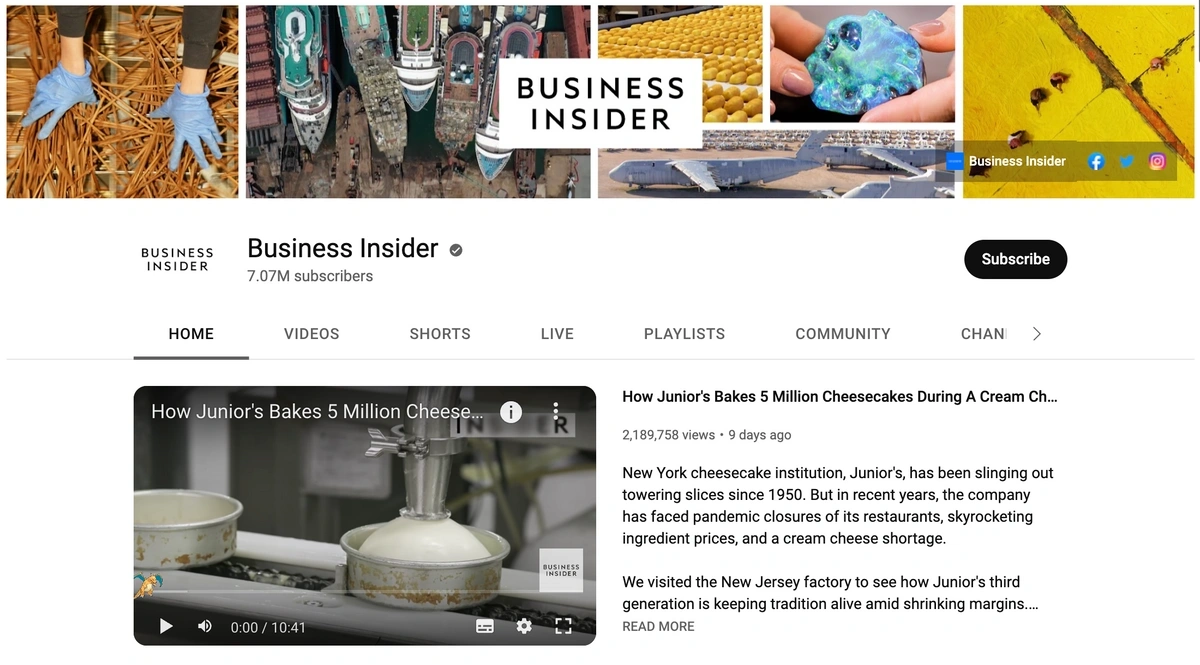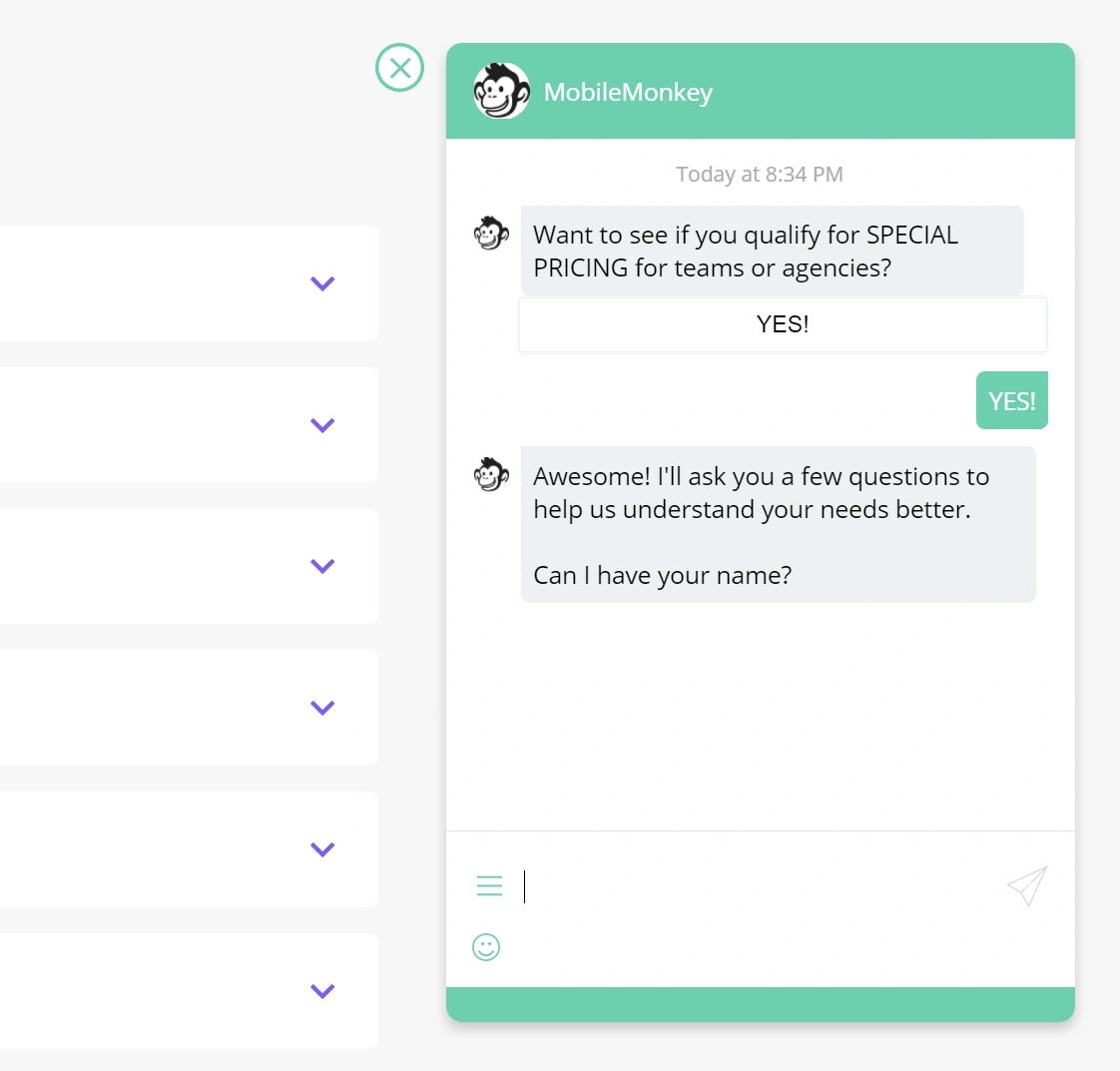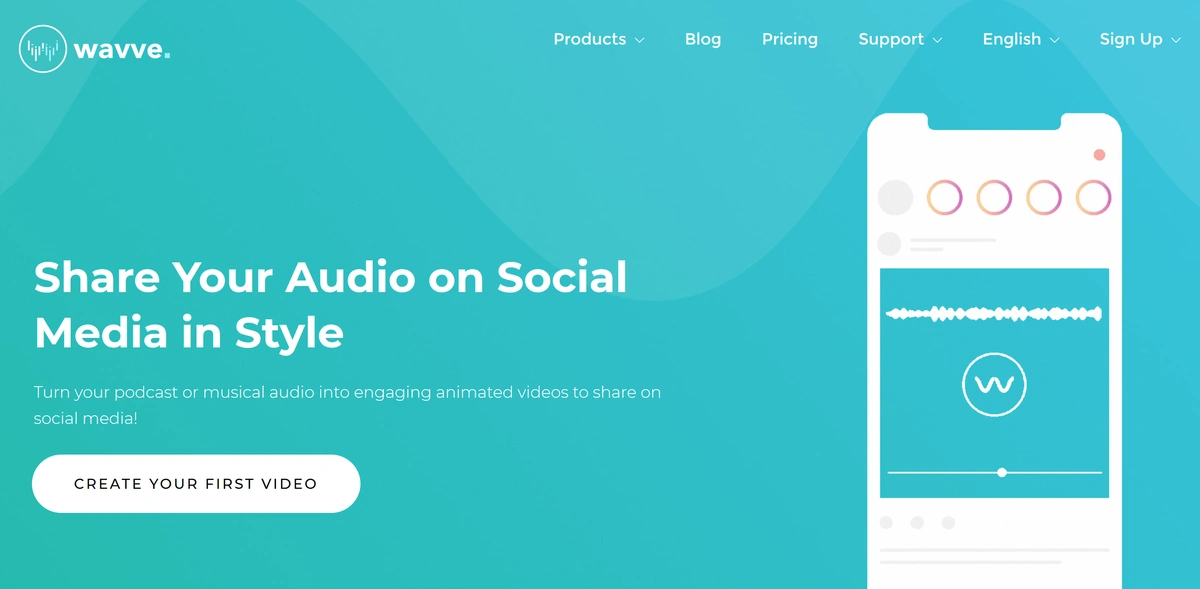
10 B2B Marketing Trends For 2024-2027
You may also like:
Like in B2C, the B2B marketing world is changing rapidly.
Decision-makers are using new channels (like podcasts) to discover new products. And are increasingly moving towards "self-service" services with flexible (or no contracts).
Which is changing how B2B brands market their products and services.
Without further ado, here are 10 of the most important B2B trends happening in 2024 and beyond.
1. Podcasts Become a Mainstream B2B Marketing Channel
Searches for "Spotify Podcasts" are up 7,400% in 5 years.
Podcasts are now a mainstream marketing channel for many B2B businesses.
To be clear: podcasts aren’t in the same category as search engine optimization, PPC, or content marketing (yet).
However, businesses are starting to shift some of their marketing budgets away from traditional channels.
And put some of that budget into podcasts.
And if you look at the numbers, this makes sense.
Demand and interest in podcasts is growing fast.
In fact, Edison Research reports that podcast listening has more than doubled since 2014.
The question is: how can you use podcasts to get in front of B2B customers?
You’ve got two main options.
First, you can create your own podcast. In fact, that’s what the folks at HubSpot recently did.
And they report that their podcast helped them get in front of their target SMB customers (to the tune of 1.5 million total downloads).
Second, you can advertise on podcasts that your target customers listen to.
Interest in "podcast marketing" has grown 235% over the last 10 years.
2. LinkedIn Makes a Comeback
Search data for "LinkedIn followers" (up 143%) shows that people clearly want to increase their presence on the platform.
LinkedIn isn’t a hot new social network (like TikTok).
And it's not a site that both B2B and B2C businesses should both spend time on (like YouTube).
But when it comes to B2B marketing, you’d be hard pressed to find a network more important than LinkedIn.
It’s literally a social network that’s 100% about work and business.
So not only do your customers probably hang out on LinkedIn.
But they’re in the “B2B mindset” while they’re logged in.
But that’s not really new: LinkedIn has always been a social network about business.
What's new is that LinkedIn is growing fast.
In fact, Microsoft reported that LinkedIn revenue was up 16% in the third quarter of 2020.
Microsoft reports that LinkedIn revenue is up significantly.
And more recently, LinkedIn attracted 1.4 billion visitors in May 2025, making it the #22 most popular website in the US.
Why has LinkedIn made a comeback as of late?
First, Microsoft rolled out a number of features that made LinkedIn less static.
For example, LinkedIn now supports video posts.
Video posts are one of many new features that LinkedIn has rolled out to be a more modern social network.
Second, organic reach on LinkedIn is relatively high.
For example, we have previously promoted some of our content on LinkedIn.
And we saw more reach there compared to similar posts on Facebook and X.
3. B2B Brands Produce More Video Content
Searches for “video marketing” have been relatively steady over the last 10 years.
One industry study found that 92% of marketers consider video “important” for their company’s marketing efforts.
And there’s no shortage of videos that can work for B2B marketing:
- YouTube videos
- Facebook Live video streams
- Webinars (including recorded webinars)
- LinkedIn videos
- Explainer videos
There's no “best’” video marketing approach for B2B.
It really depends on what your business sells. And where your customers hang out online.
Plus, B2B businesses that succeed with video tend to use the format in multiple ways.
For example, Business Insider has a popular YouTube channel.
Business Insider’s YouTube channel has over 7M subscribers.
But they also use a lot of short-form video on Twitter:
BI shares plenty of short videos designed specifically for social.
4. B2B Content Marketing Gets More Competitive
At least according to Google search data, more and more B2B businesses are looking to improve their content marketing strategy.
Content marketing has been a B2B marketing mainstay for decades.
But interest in B2B content marketing has really taken off over the last few years.
Which has made the channel significantly more competitive. And expensive.
In fact, Content Marketing Institute reports that 56% of B2B marketing teams are investing more money in content creation.
Some of this marketing budget is to help scale up their content production.
But a good chunk of that money (36% to be exact) is designed to help their content stand out in an increasingly competitive B2B content landscape.
So, how can companies get their B2B content to drive targeted traffic to their site?
Content marketing tool BuzzSumo recently conducted an analysis of 50k B2B articles.
BuzzSumo's large-scale analysis of B2B content.
They discovered that successful B2B content (defined by the number of social shares and backlinks) tend to have these key features in common:
- B2B content that covered evergreen topics tended to get more shares over the long term than content about a news item or fad.
- B2B content that used specific headline phrases (like “The future of…”) performed best.
- Long-form content from B2B publishers got more backlinks, shares and engagement vs content that was <1k words in length.
5. AI and Machine Learning Aim to Improve PPC ROI
Artificial intelligence technology is starting to impact how B2B businesses run their PPC ad campaigns.
For example, take Google’s popular "Smart Bidding" feature in Google Ads.
Search interest in Google’s Smart Bidding has had ups and downs. But it's up 3,700% over 10 years.
Smart Bidding does a lot of the legwork of managing a Google Ad campaign automatically.
And because it can analyze so many variables at once, it can sometimes optimize ad spending better than humans.
Needless to say: paid ad campaigns will always need a human component.
After all, AI can’t currently create compelling ad copy.
Or design an eye-catching creative from scratch.
But as ad platforms integrate AI into their products, expect to see more B2B businesses use AI tech to help them optimize PPC campaigns.
6. Chatbot Adoption Continues to Expand
Searches for “chatbot” are up 219% over the last 5 years.
Chatbots seemed like a fad when they first burst onto the scene a few years back.
But it’s clear that chatbots are now a mainstay marketing channel.
Especially when it comes to converting B2B website visitors into leads and sales.
Chatbots are now commonplace on many B2B sites.
That’s because chatbots can help with “the last mile” of B2B marketing.
You’ve used a piece of content or an ad to get someone to your website.
They’re browsing your plans and pricing page.
But many visitors need that “nudge” to get them to take action.
Yes, you could hire a 24/7 support staff to manage your live chat. But that can be pricey.
This is why chatbots have become so popular: they may not perform like an actual human.
But, unlike a human support staff, chatbots are infinitely scalable.
(Plus, thanks to AI, they can learn and improve as they interact with your site visitors.)
For example, chatbots helped the B2B company SalesRabbit increase the number of leads that they got from their website by 50%.
SalesRabbit is one of many B2B brands that use chatbots to close potential leads.
That said, chatbots aren't only used for sales and lead generation. They can also be used to help existing customers.
And thanks to being available 24/7, improve the customer experience compared to traditional support.
From answering questions to upgrading accounts, chatbots are now commonly used for retention marketing.
7. Marketing Automation Gets Simplified
Marketing automation has been one of the biggest digital marketing trends over the last five years.
Google searches for “marketing automation” have more than tripled over the last 10 years.
And there is a good reason for that: when done correctly, marketing automation lead to more opened emails, more clicks and more leads.
That said, marketing automation has one major flaw: it’s complicated to set up.
This may explain why 41% of B2B businesses state that they’re not getting the most out of their company’s marketing automation.
And half say that they want less expensive alternatives.
It’s no wonder that many B2B businesses are replacing complicated marketing automation software with simpler and cheaper funnel tools.
Funnel software is essentially a stripped down and focused version of a traditional marketing automation tool.
Interest in funnel software is growing in general. But the leader in the space at the moment appears to be ClickFunnels (with a reported $160 million ARR).

8. Companies Repurpose Their B2B Content
Searches for “content repurposing” are up 500% over 5 years. Search volume is low, so peaks and troughs appear extreme, but the overall trend is upwards.
Creating B2B content can be extremely expensive.
Unlike content in the B2C world, you need to hire a writer who knows about your niche industry.
Ideally, that person would also be able to turn “boring” B2B topics into something people want to read, watch, or listen to.
Back in the day, businesses would use a piece of content once.
If the content did well? Great. If not? Then it was time to work on something else.
Today, B2B businesses are using content repurposing to squeeze more value out of the content that they create and publish.
We’re even seeing a number of tools coming out specifically for repurposing content.
For example, Wavve helps podcasters repurpose clips from their episodes into bite-sized content that can be shared on social media.
Wavve is one of many tools dedicated to repurposing content.
And because Wavve tapped into the content repurposing trend, they’ve seen significant growth.
Searches for audio-sharing software Wavve have grown by 1,567% over the last 5 years.
9. B2B Companies Use Storytelling in Their Marketing Campaigns
Businesses are increasingly interested (69% growth over 5 years) in so-called “storytelling marketing”.
Most B2B companies approach marketing the same way: they highlight their product’s key features.
And why their company is the best overall option in the market.
In theory, this approach makes sense.
After all, B2B is all about getting a company’s decision-makers to see your product as the best option.
So if you highlight why you’re the best, they should pick you.
But you probably already know that MBA-style theory doesn’t always play out in the real world.
Just like in B2C, B2B decision-makers don’t decide on products with 100% logic and reasoning.
There’s a lot of emotion involved.
This is why more and more B2B businesses are using storytelling to help their products stand out. Get remembered. And to close deals.
For example, Salesforce uses storytelling to humanize the benefits their customers get from their CRM.
The fast-growing Storybrand has also tapped into this growing B2B trend.
Storybrand advises companies that want to integrate storytelling into their B2B marketing strategy. And they’ve grown by leaps and bounds over the last few years.
Searches for "Storybrand" have seen long-term, sustained growth (8,000% over 5 years).
10. Personas Help B2B Businesses Reach the Right People

Customer personas are important for any company’s marketing.
But they’re especially important in B2B.
That’s because a customer persona helps you visualize the exact decision-maker you want to get in front of.
In some cases, it will be the CEO of a company. But it could also be a C-level executive. Or the head of IT.
A persona helps you pinpoint the exact person you need to get in front of. The right platform to market on. The type of marketing messages you should create. And copy that appeals to that specific person.
For example, ShipBob uses targeted copy that appeals specifically to its target customers (DTC eCommerce brands).
Shipbob’s growth is partly due to the pandemic. But it's also thanks to the fact that they target (and market to) a specific persona.
Conclusion
These are 10 key B2B trends to keep an eye on right now.
Yes, old-school digital marketing practices (like email marketing and ABM) remain as relevant as ever.
But just like in the B2C world, there are a number of changes happening in the B2B business world.
Savvy B2B brands are tapping into these trends to stay ahead of the curve. And to get an edge on the competition.
Stop Guessing, Start Growing 🚀
Use real-time topic data to create content that resonates and brings results.
Exploding Topics is owned by Semrush. Our mission is to provide accurate data and expert insights on emerging trends. Unless otherwise noted, this page’s content was written by either an employee or a paid contractor of Semrush Inc.
Share
Newsletter Signup
By clicking “Subscribe” you agree to Semrush Privacy Policy and consent to Semrush using your contact data for newsletter purposes
Written By


Josh is the Co-Founder and CTO of Exploding Topics. Josh has led Exploding Topics product development from the first line of co... Read more

























